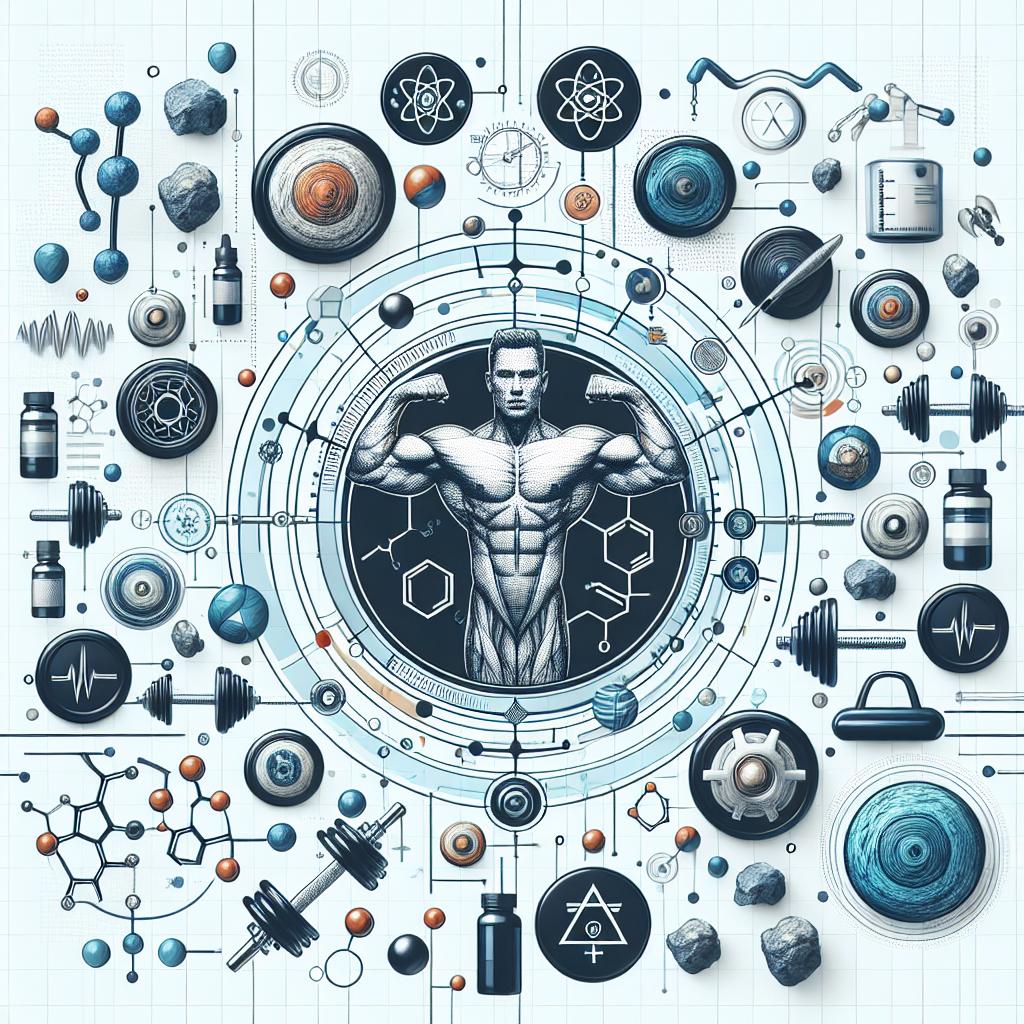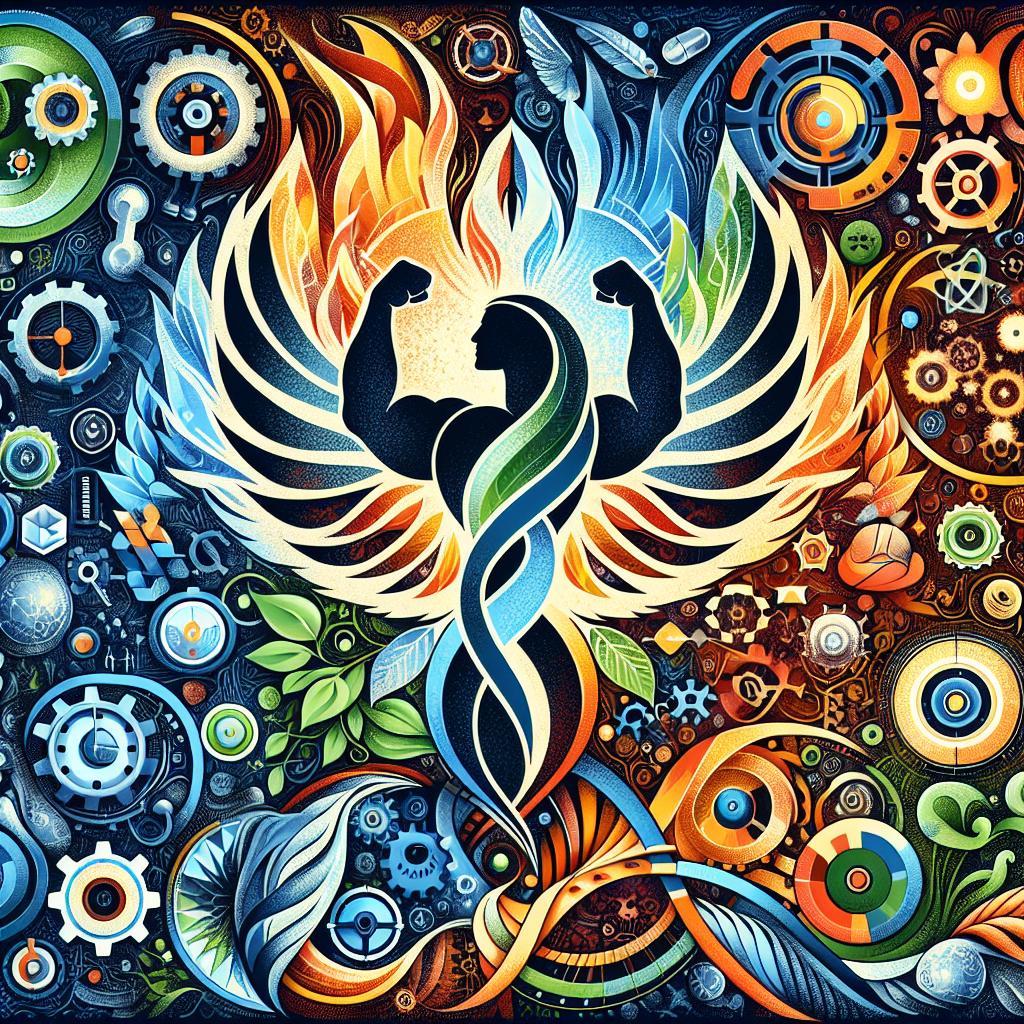In a world where the pursuit of fitness and well-being often takes center stage, the quest for lean muscle has become a defining goal for many. Among the myriad strategies to enhance strength and physique, testosterone therapy has emerged as a subject of increasing interest. This article delves into the intricate relationship between testosterone and muscle composition, exploring how this hormone can be a key player in the journey towards achieving a sculpted, powerful body. Whether you’re an athlete striving for peak performance or someone simply seeking to reclaim vitality, understanding testosterone therapy and its potential benefits could open new avenues in your fitness regimen. Join us as we unpack the science, the benefits, and the considerations surrounding this promising therapeutic approach.
Understanding Testosterone Therapy and Its Benefits for Muscle Growth
Testosterone therapy has emerged as a crucial tool for individuals looking to enhance their muscle growth and overall physical performance. This hormone, primarily known for its role in male health, plays a significant part in both genders. By administering testosterone therapy, individuals experience increased protein synthesis, allowing for enhanced muscle mass and strength gains. Notably, therapy can lead to improvements in general vitality and motivation, which are essential for maintaining a consistent workout regimen.
Key benefits of testosterone therapy for muscle growth include:
- Increased Muscle Mass: Facilitates development of lean muscle by promoting muscle fiber size and density.
- Enhanced Recovery: Reduces recovery time post-workout, allowing for more intensive training sessions.
- Improved Strength: Elevates overall physical strength, enabling individuals to lift heavier weights.
- Enhanced Mood and Energy: Boosts motivation and reduces fatigue, leading to better workout adherence.
| Benefits | Effects |
|---|---|
| Lean Muscle Development | Increased muscle size and strength |
| Faster Recovery | Reduced downtime between workouts |
| Improved Athletic Performance | Enhanced endurance and power |
| Better Mood Regulation | Increased motivation and reduced stress |

The Science Behind Testosterone: How It Influences Muscle Development
Testosterone plays a crucial role in the development and maintenance of muscle mass. As an anabolic hormone, it stimulates protein synthesis, promoting muscle growth following exercise. This hormone not only enhances the body’s ability to engage in strenuous activity but also influences the distribution of muscle fibers, favoring the growth of fast-twitch fibers that are essential for explosive strength and power. Factors such as age, diet, and exercise can significantly affect testosterone levels, making testosterone therapy an attractive option for those seeking to enhance muscle development efficiently.
In addition to its direct effects on muscle growth, testosterone contributes to a range of physiological functions that indirectly support lean muscle gain. These include:
- Increased bone density: Stronger bones provide a better foundation for muscle attachment and movement.
- Enhanced recovery: Higher testosterone levels can speed up recovery time between workouts, allowing for more frequent training sessions.
- Improved mood and motivation: Elevated hormone levels can lead to increased energy and focus during workouts.
The interplay of these factors creates a comprehensive environment conducive to muscle growth, making testosterone not just a single player but a pivotal figure in the orchestra of muscle development.

Assessing Your Eligibility: Who Can Benefit from Testosterone Therapy
Testosterone therapy can serve as a powerful tool for those seeking to enhance their physical capabilities, particularly in the pursuit of lean muscle gain. However, before diving into treatment, it is crucial to assess whether you meet the necessary criteria. Generally, individuals exhibiting symptoms of low testosterone—such as fatigue, reduced libido, or difficulty in muscle retention—may find significant benefit from this therapy. Beyond just symptomology, a formal medical diagnosis through blood tests indicating low testosterone levels is essential in determining eligibility. Potential candidates often include:
- Males aged 30 and above who experience hormone decline due to natural aging processes.
- Athletes looking to improve recovery times and enhance performance.
- Bodybuilders struggling with building and maintaining muscle mass despite rigorous training.
Additionally, it’s vital to consider any underlying health conditions and personal history that could affect testosterone levels and therapy outcomes. Individuals with chronic illnesses, obesity, or hormonal disorders may need a tailored approach to their treatment. Prior to commencing therapy, a thorough evaluation by a healthcare provider will help outline the best course of action and ensure safety while maximizing benefits. Here’s a quick reference table that summarizes common indicators for therapy eligibility:
| Indicator | Details |
|---|---|
| Symptoms | Fatigue, Low libido, Difficulty gaining muscle |
| Age | Males 30 years and older |
| Medical History | Chronic illnesses, Hormonal disorders |

Exploring Different Forms of Testosterone Therapy for Optimal Results
In the realm of testosterone therapy, several methods can be employed to help individuals achieve their fitness goals, particularly in building lean muscle. Each form of therapy has unique characteristics and benefits that can cater to different preferences and lifestyles. Here are some common options for testosterone replacement therapy:
- Injections: Administered intramuscularly or subcutaneously, injections can provide a quick boost in testosterone levels. Frequency can vary from weekly to monthly, depending on individual needs.
- Transdermal Patches: These are applied to the skin and deliver a steady stream of testosterone. Patches can be a convenient option for those seeking a consistent rate of hormone absorption.
- Topical Gels: Similar to patches, gels allow for easy application and absorption through the skin. They provide flexibility as users can adjust the dose based on their daily activities.
- Pellets: Implanted under the skin, pellets offer a long-lasting solution with effects that can last for several months, making them a low-maintenance option for many individuals.
Choosing the right form of therapy can enhance the experience and results of testosterone treatment. It’s essential to consider individual lifestyle, comfort level with administration methods, and specific health conditions. Below is a brief comparison table summarizing the various forms of testosterone therapy:
| Method | Frequency | Pros | Cons |
|---|---|---|---|
| Injections | Weekly/Monthly | Quick results | Can be uncomfortable |
| Patches | Daily | Steady delivery | May irritate skin |
| Gels | Daily | Flexible dosing | Risk of transferring to others |
| Pellets | Every 3-6 months | Long-lasting effects | Minor surgical procedure required |

Integrating Nutrition and Exercise: Enhancing Testosterone Therapy Outcomes
To maximize the benefits of testosterone therapy, it is essential to understand the synergetic relationship between nutrition and exercise. Protein-rich foods play a crucial role in supporting muscle protein synthesis, which is essential for building lean muscle mass. Incorporating sources like chicken, fish, eggs, and legumes into your diet can significantly enhance your workout recovery. Additionally, healthy fats, such as avocado, nuts, and olive oil, support hormonal balance and can contribute to optimizing testosterone levels. A well-rounded diet should also include a variety of fruits and vegetables to provide essential vitamins and minerals that further support your physical performance.
When it comes to exercise, combining strength training with high-intensity interval training (HIIT) can be particularly effective in elevating testosterone levels naturally. Strength training stimulates the hormones involved in muscle growth and, when paired with proper nutrition, can amplify the effects of testosterone therapy. Consider the following types of exercises as part of your routine:
| Exercise Type | Benefits |
|---|---|
| Squats | Engages multiple muscle groups; boosts testosterone levels |
| Deadlifts | Enhances strength and explosiveness |
| Bench Press | Increases upper body strength |
| HIIT Workouts | Improves cardiovascular health; accelerates fat loss |
By integrating these nutritional strategies and focused exercise regimens, individuals undergoing testosterone therapy can create a more robust foundation for muscle growth and overall health. It’s important to personalize your approach based on your individual needs and consult with healthcare professionals to ensure that your diet and exercise plans align with your therapy goals.

Potential Risks and Considerations in Testosterone Therapy for Muscle Gain
While testosterone therapy can offer significant benefits for muscle gain, it is essential to consider potential risks that accompany its use. Side effects may include mood swings, increased aggression, and changes in libido, which can affect overall well-being. Moreover, users should be aware of cardiovascular issues that may arise, such as elevated blood pressure and an increased risk of heart disease. Regular monitoring by a healthcare provider is crucial to mitigate these risks effectively.
Additionally, there are long-term considerations that require attention. Testosterone therapy may lead to hormonal imbalances, potentially causing infertility or testicular atrophy. It’s also essential to address the possibility of liver damage, particularly with oral testosterone formulations. Therefore, anyone considering testosterone therapy should conduct a thorough discussion with their medical professional to weigh the potential benefits against these significant risks.

Taking the Next Steps: Consulting Healthcare Professionals for Safe Use
Before embarking on a testosterone therapy regimen to enhance lean muscle mass, consulting healthcare professionals is paramount. This step ensures that you are not only aware of the benefits but also the potential risks associated with hormone replacement therapy. These professionals can offer invaluable insights tailored specifically to your individual health needs. By evaluating your medical history and conducting appropriate tests, they can determine whether testosterone therapy is a suitable option for you. Moreover, they can guide you on safe dosages and monitor your progress to prevent unintended side effects.
In addition to the initial consultation, ongoing support from healthcare experts is essential for maximizing the effectiveness of your testosterone therapy. Consider discussing the following points with your healthcare provider:
- Regular Monitoring: Schedule consistent check-ups to track hormone levels and adjust dosages if necessary.
- Diet and Exercise: Ask for personalized recommendations on nutrition and physical activity that support muscle growth.
- Potential Side Effects: Be informed about the common and serious risks associated with testosterone therapy.
- Alternative Options: Explore other treatment methods or lifestyle changes that could align with your health goals.
Q&A
Q&A: Testosterone Therapy for Lean Muscle
Q1: What is testosterone therapy, and how does it relate to lean muscle growth?
A1: Testosterone therapy involves administering testosterone, a hormone crucial for the development and maintenance of male traits, muscle mass, and overall vitality. In the context of lean muscle growth, testosterone helps stimulate protein synthesis, increases muscle strength, and enhances recovery, which can collectively contribute to muscle development, particularly in individuals with low testosterone levels.
Q2: Who might benefit from testosterone therapy for lean muscle gain?
A2: Individuals who may benefit from testosterone therapy include men with clinically low testosterone levels (hypogonadism) and possibly older adults facing age-related testosterone decline. Athletes or bodybuilders seeking to optimize their muscle mass may also consider it, although they should do so cautiously and under medical supervision to avoid potential side effects.
Q3: Are there specific indicators that someone should look for when considering this therapy?
A3: Signs that may warrant a discussion about testosterone therapy include persistent fatigue, reduced libido, diminished strength, unexplained weight gain, and decreased muscle mass. A comprehensive hormonal evaluation by a healthcare provider can confirm low testosterone levels and help determine if therapy is appropriate.
Q4: What are the potential risks and side effects associated with testosterone therapy?
A4: While testosterone therapy can offer many benefits, it is not without risks. Potential side effects include acne, sleep apnea, increased red blood cell count, heart issues, and hormonal imbalances, such as gynecomastia (breast tissue enlargement in men). Medical supervision is essential to minimize these risks.
Q5: Is testosterone therapy the only way to build lean muscle effectively?
A5: No, testosterone therapy is not the only avenue for building lean muscle. A balanced diet rich in protein, regular strength training, adequate sleep, and overall healthy lifestyle choices play crucial roles in muscle development. For individuals with normal testosterone levels, these natural methods are often sufficient for achieving lean muscle growth.
Q6: Can women benefit from testosterone therapy for muscle growth?
A6: Yes, women also produce testosterone, albeit in lower amounts than men. Some women with low testosterone may benefit from therapy in terms of improved muscle mass and strength. However, the approach must be cautious, as women are more susceptible to the side effects of testosterone. Consulting with a healthcare provider is essential for safe treatment.
Q7: How long does it generally take to see results from testosterone therapy in terms of muscle gain?
A7: Results vary among individuals, but typically, some improvements in muscle strength and size may be noticed within a few weeks to a few months of starting testosterone therapy. A complete transformation, however, often requires consistent training and proper nutrition alongside the therapy for optimal results.
Q8: What guidelines should one follow if considering testosterone therapy?
A8: If considering testosterone therapy, it is crucial to engage with a healthcare provider who specializes in hormone treatments. Regular monitoring of hormone levels, physical health, and any emerging side effects is vital for both safety and effectiveness. Follow a well-rounded fitness regimen along with a healthy diet to maximize benefits while minimizing risks.
Q9: Can natural supplements or lifestyle changes mimic the effects of testosterone therapy?
A9: Certain lifestyle changes, such as regular exercise, proper nutrition, stress management, and adequate sleep, can naturally optimize testosterone levels. Some natural supplements, like vitamin D and zinc, may support hormonal balance, but they typically do not produce results comparable to direct testosterone therapy. Always consult with a healthcare professional before starting any new supplement regimen.
Q10: What’s the final insight on testosterone therapy for those seeking lean muscle growth?
A10: Testosterone therapy can be a valuable tool for individuals with low levels of the hormone, aiding in lean muscle growth and overall well-being. However, it is essential to approach it with diligence—prioritizing a health-first mindset and underlying fitness principles to achieve the best outcomes while safeguarding against potential risks. Always seek qualified medical advice to navigate this complex decision.
To Wrap It Up
the journey toward achieving lean muscle mass is a multifaceted endeavor, and testosterone therapy represents just one potential pathway. As we’ve explored, its impact on muscle growth, recovery, and overall performance can be significant for those facing hormonal imbalances. However, it is essential to approach this therapy with caution, guided by medical expertise and a thorough understanding of personal health. Incorporating a balanced diet, a well-structured exercise regimen, and regular health check-ups will always remain cornerstones of any fitness journey. Ultimately, whether you choose to explore testosterone therapy or not, the goal remains the same: to embrace a stronger, healthier version of yourself. Choose wisely, stay informed, and let your quest for lean muscle lead you to both physical empowerment and holistic well-being.










